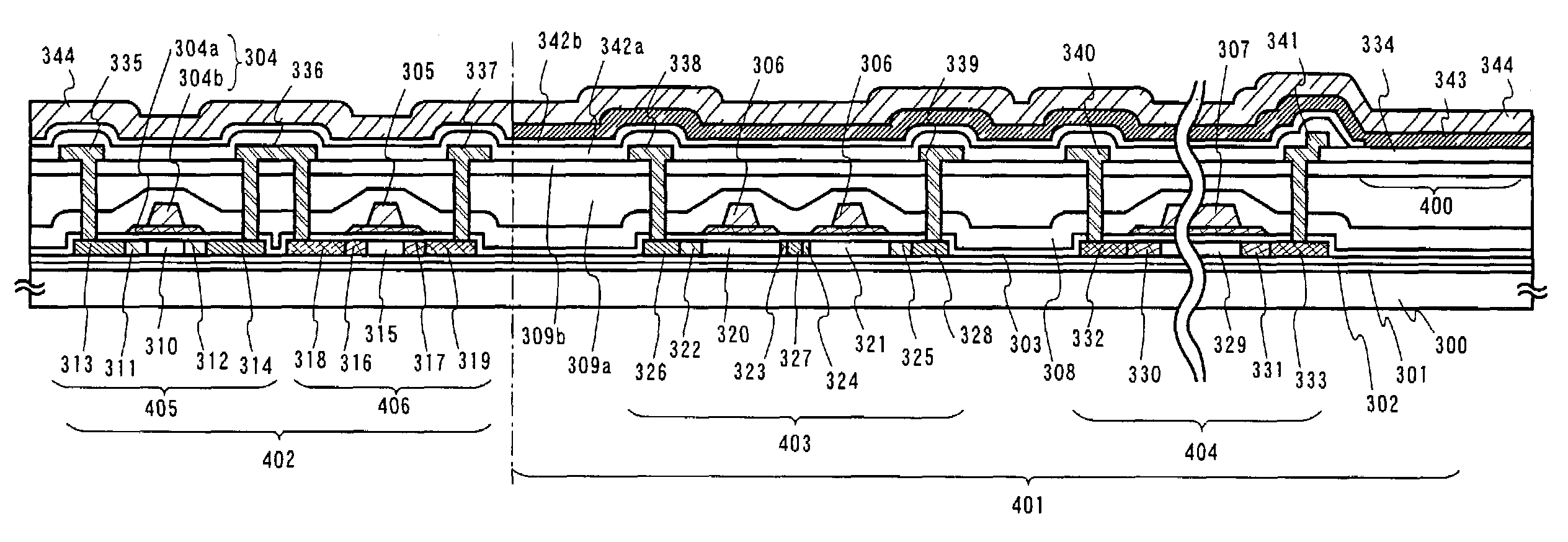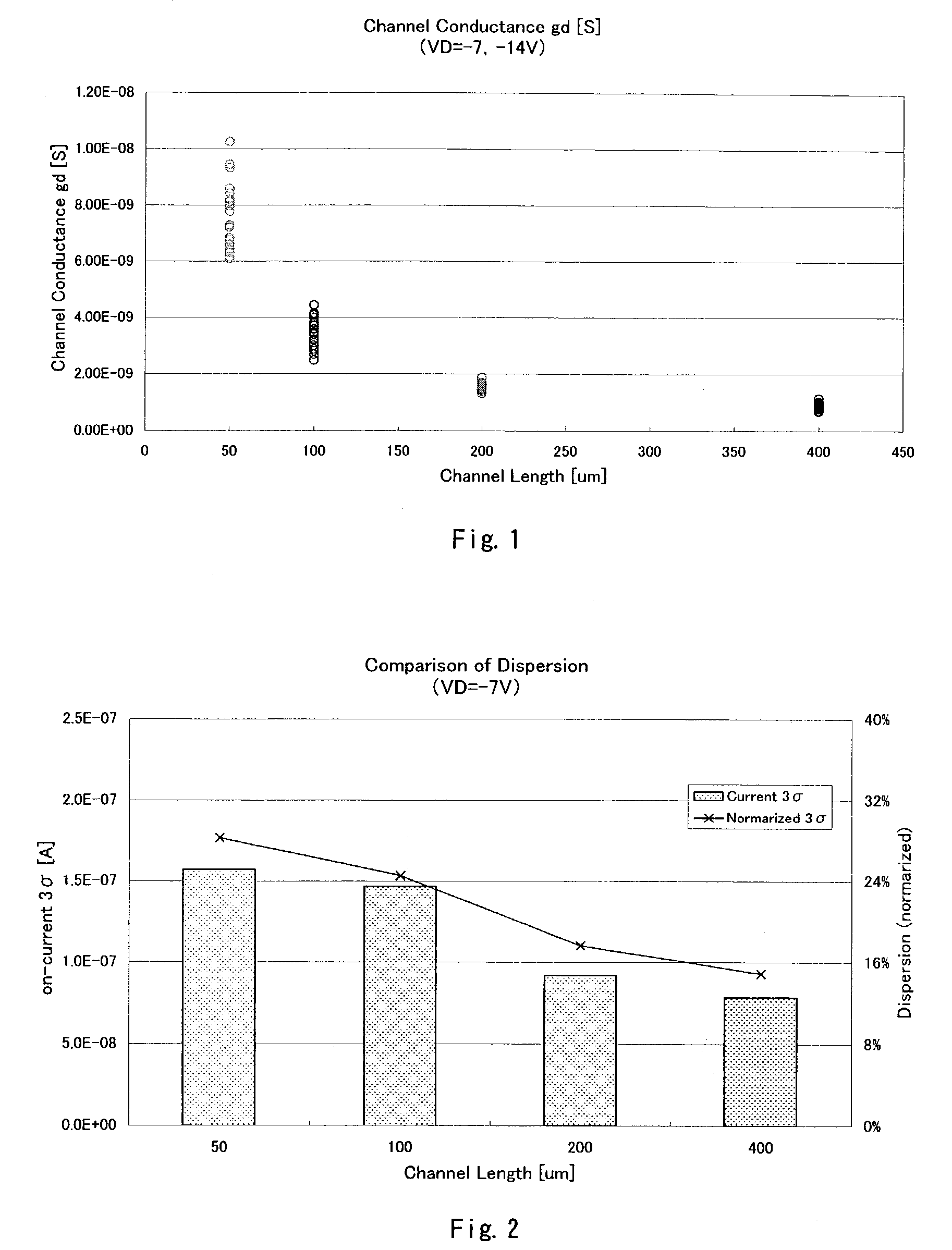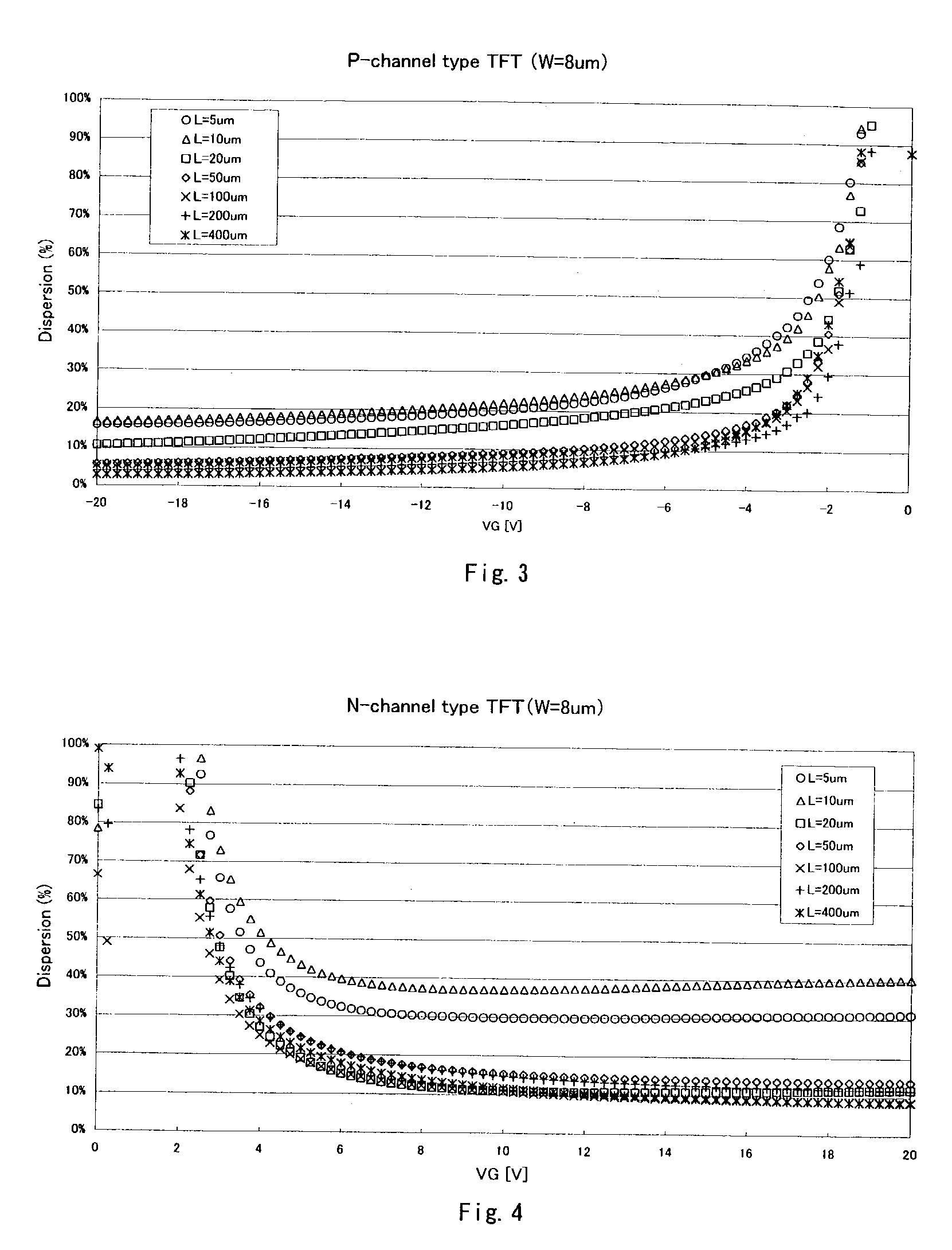Light emitting device having TFT
a technology of light-emitting devices and tft, which is applied in the direction of thermoelectric devices, identification means, instruments, etc., can solve the problems of increased driving voltage and power consumption, restricted aperture rate, and increased so as to reduce the current flow to the tft, the channel conductance gd is smaller, and the brightness constant
- Summary
- Abstract
- Description
- Claims
- Application Information
AI Technical Summary
Benefits of technology
Problems solved by technology
Method used
Image
Examples
embodiment 1
[0105]Here, a method of simultaneously manufacturing a pixel portion and TFTs (n-channel TFTs and a p-channel TFT) of a driving circuit provided in the periphery of the pixel portion over the same substrate to manufacture the light emitting device having OLED is described in detail.
[0106]For a lower layer of the base insulating film 301, a silicon oxynitride film formed from SiH4, NH3, and N2O as material gases (composition ratio: Si=32%, O=27%, N=24%, H=17%) is formed on the heat resistance glass substrate (the first substrate 300) having a thickness of 0.7 mm with a thickness of 50 nm (preferably 10 to 200 nm) and at a film deposition temperature of 400° C. by using plasma CVD. Then, after the surface is cleaned with ozone water, an oxide film on the surface is removed by means of dilute hydrofluoric acid (dilution with 1 / 100). Next, for an upper layer of a base insulating film 302, a silicon hydride oxynitride film formed from SiH4 and N2O as material gases (composition ratio: Si...
embodiment 2
[0150]This embodiment shows a top view (FIGS. 5 and 6) that is enlarged a part of the pixel portion in Embodiment 1, and a top view that is different in a part from FIGS. 5 and 6 is shown in FIGS. 13A and 13B.
[0151]FIG. 13A is a corresponding top view to FIG. 6, and same portions thereof are indicated by same symbols. FIG. 13A is an example of semiconductor layer 1102 that has different patterning shape that is adopted instead of the semiconductor layer 102 shown in FIG. 6. In this embodiment, the semiconductor layer 1102 is meandering. As shown in FIG. 13A, channel length L×channel width W is the same as FIG. 6, and is set 500 μm×4 μm. FIG. 13A is same as Embodiment 1 except the semiconductor layer 1102 that has a different patterning shape, so that another explanation may be referenced to Embodiment 1.
[0152]FIG. 13B shows another different top view. Same portion corresponding to FIG. 6 are indicated by same symbols. FIG. 13B shows a semiconductor layer 1202 that has different patt...
embodiment 3
[0154]The top view and cross-sectional view of the module type light emitting device (also referred to as EL module) obtained by Embodiment 1 or 2 are illustrated.
[0155]FIG. 6A is a top view of an EL module, and FIG. 14B is a cross-sectional view taken along the line A-A′ of FIG. 14A. In FIG. 14A, a base insulating film 501 is formed on a substrate 500 (for example, a heat resistant glass), and a pixel portion 502, a source driving circuit 504, and a gate driving circuit 503 are formed thereon. These pixel portion and driving circuit may be obtained by Embodiment 1 or 2.
[0156]Reference numeral 518 is an organic resin, reference numeral 519 is a protective film, a pixel portion and a driving circuit are covered with the organic resin 518, and the organic resin 518 is covered with the protective film 518. In addition, the cover material may be used to seal using bonding material. The cover material may be bonded as a support medium before peeled off.
[0157]Wiring 508 for transmitting s...
PUM
 Login to View More
Login to View More Abstract
Description
Claims
Application Information
 Login to View More
Login to View More - R&D
- Intellectual Property
- Life Sciences
- Materials
- Tech Scout
- Unparalleled Data Quality
- Higher Quality Content
- 60% Fewer Hallucinations
Browse by: Latest US Patents, China's latest patents, Technical Efficacy Thesaurus, Application Domain, Technology Topic, Popular Technical Reports.
© 2025 PatSnap. All rights reserved.Legal|Privacy policy|Modern Slavery Act Transparency Statement|Sitemap|About US| Contact US: help@patsnap.com



